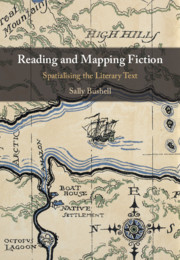Book contents
- Reading and Mapping Fiction
- Reading and Mapping Fiction
- Copyright page
- Dedication
- Contents
- Illustrations
- Acknowledgement of Prior Publications
- Acknowledgements
- Introduction
- 1 A Shifting Relationship: From Literary Geography to Critical Literary Mapping
- 2 Historicising the Fictional Map
- 3 Doubleness and Silence in Adventure and Spy Fiction
- 4 Mapping Murder
- 5 Playspace: Spatialising Children’s Fiction
- 6 Mapping Worlds: Tolkien’s Cartographic Imagination
- 7 Fearing the Map: Representational Priorities and Referential Assumptions
- 8 Reading As Mapping, or, What Cannot Be Visualised
- Bibliography
- Index
4 - Mapping Murder
Published online by Cambridge University Press: 11 June 2020
- Reading and Mapping Fiction
- Reading and Mapping Fiction
- Copyright page
- Dedication
- Contents
- Illustrations
- Acknowledgement of Prior Publications
- Acknowledgements
- Introduction
- 1 A Shifting Relationship: From Literary Geography to Critical Literary Mapping
- 2 Historicising the Fictional Map
- 3 Doubleness and Silence in Adventure and Spy Fiction
- 4 Mapping Murder
- 5 Playspace: Spatialising Children’s Fiction
- 6 Mapping Worlds: Tolkien’s Cartographic Imagination
- 7 Fearing the Map: Representational Priorities and Referential Assumptions
- 8 Reading As Mapping, or, What Cannot Be Visualised
- Bibliography
- Index
Summary
Chapter Four examines the emergence of detective fiction in relation to real-world crime and how the reporting and mapping of it within newspapers bears upon fictional representations. It offers a sceptical (critical cartographic) reading of the map as something not to be trusted in the search for truth. This issue is considered in relation to the work of Agatha Christie which contains multiple maps. A final section on maps and human geometry (relations between people and place) analyses the social and human dimensions of such maps in the work of Christie and Margery Allingham. (95)
Information
- Type
- Chapter
- Information
- Reading and Mapping FictionSpatialising the Literary Text, pp. 127 - 163Publisher: Cambridge University PressPrint publication year: 2020
